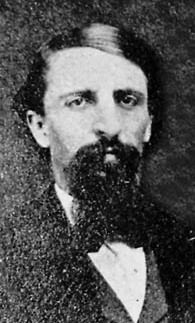Name Josiah Holbrook | Died 1854 | |
 | ||
Education Yale College, Yale University | ||
Josiah Holbrook (1788–1854) was the founder of the Lyceum movement in the United States. He spent most of his life promoting the movement and manufacturing scientific tools for use in lyceums.
Contents
Early life
Holbrook was born and raised on the family farm June 17, 1788, in Derby, Connecticut. His father was Colonel Daniel Holbrook.
Education
Holbrook received private education in the way of college prep studies under pastor Amasa Porter of Derby, England. He entered Yale College in 1806. While there scientist Benjamin Silliman got him interested in chemistry and mineralogy. He graduated from there in 1810. Holbrook then did some teaching in farm technology in the northeastern states, where he also lectured on geology.
Family
Holbrook married Lucy Swift in 1814. They had two sons. His wife died in 1819. Holbrook's parents died about this same time and he inherited the family farm. He then learned animal husbandry in addition to the scientific farm techniques he was already working with. Farming and agriculture was where he devoted his labors then.
Schools and lyceums
Holbrook organized the first industrial school in the United States. It was modeled after the agronomy ideas of Philipp Emanuel von Fellenberg of Switzerland. Holbrook's school was the main motivator in the new movement of lyceum schooling and industrial training in the United States. Holbrook was the inspiration behind the American Lyceum Association, the second national education association. Its purpose was, (1) to get better government support for public schools; (2) to upgrade the skills of teachers; (3) to have college prep courses in public schools; (4) to upgrade school text books and materials of instruction; (5) to teach the natural sciences as regular courses; (6) to upgrade teaching equipment; and (7) to get young ladies involved in early education for careers.
Holbrook published in early 1826 an article in Henry Barnard's Journal of Education proposing the organizing of the lyceum school concept. He then founded the first lyceum school in the United States. It was formed in Millbury, Massachusetts later in 1826. Towns in other States followed his example and by 1827 these other schools were combined together, forming the first nationwide organization of lyceum schools. He wanted a broad social structure that would provide a common education for young adults to help in their future careers. Holbrook was successful in his Boston business and used his profits for producing equipment to use in educational establishments. He traveled throughout the New England states promoting the lyceum school idea with instruction pamphlets he created and lectures he did. In 1832–1833 he edited the Family Lyceum.
The lyceum system concept that Holbrook started flourished in New England and the Midwestern United States. It served as a platform for scientific techniques, scholar endeavors, religion, and politics. It helped promote a need for a uniform educational system in the United States that would include professional teacher training. Some notable speakers in these Lyceum schools included Louis Agassiz, Daniel Webster, Oliver Wendell Holmes Sr., Nathaniel Hawthorne, William Lloyd Garrison, Wendell Phillips, Frederick Douglass, and Susan B. Anthony. Holbrook attempted an international lyceum, however other formal educational systems eventually took the place of his schools and the lyceum idea was discontinued in the early 20th century.
Later life and death
Holbrook moved to Washington, D.C. in the later 1840s. He continued to write articles promoting the concept of the lyceum school. He went on geological expeditions and on one such trip at Lynchburg, Virginia, in 1854 he drowned at Blackwater Creek.
